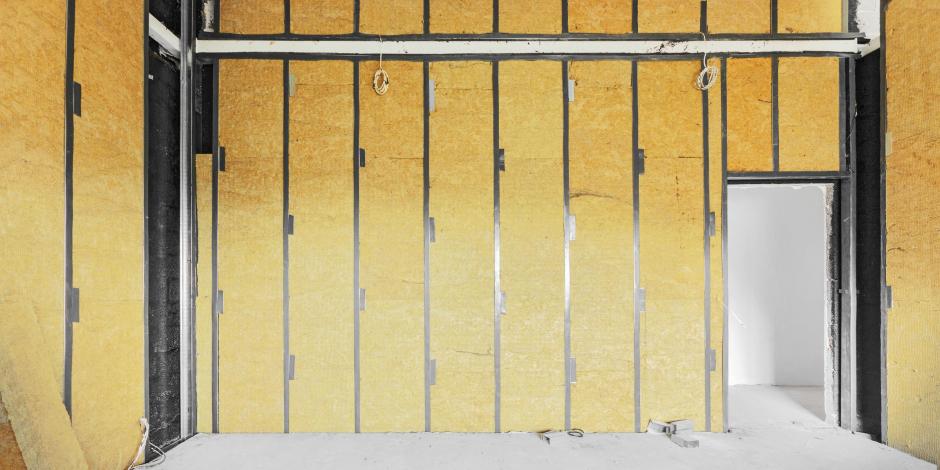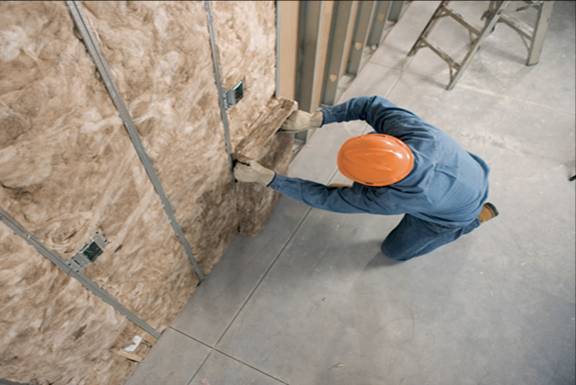Proper insulation is essential to maximizing the long-term performance of commercial buildings. It helps regulate indoor temperatures, reduce energy use, minimize moisture buildup, and improve comfort across working environments. Whether designing a new structure or upgrading an existing one, insulation must be strategically chosen and applied based on climate, building usage, and construction type.
Insulating your commercial building for optimal performance means selecting the right materials, understanding how they integrate with building systems, and accounting for long-term maintenance, environmental exposure, and code compliance. This guide outlines the key decisions and options building professionals should consider to optimize insulation systems from the inside out.
Why Commercial Insulation Matters
Insulation is a core contributor to energy efficiency in commercial spaces. Unlike residential structures, commercial buildings often face complex thermal dynamics due to varying occupancies, large-scale HVAC systems, and more extensive envelopes. Without adequate insulation, performance suffers at multiple levels.
Key advantages of commercial insulation include improved temperature control, reduced energy consumption, better humidity management, enhanced sound control, and support for code compliance and fire safety. Well-designed insulation contributes to predictable operating conditions and helps meet energy performance standards, especially in LEED-certified or energy-efficient buildings.

Major Insulation Types for Commercial Buildings
Choosing the best insulation depends on factors like thermal resistance, durability, air sealing, fire resistance, and acoustic control. Here’s a breakdown of the most widely used materials in commercial settings.
Comparison Table: Common Commercial Insulation Types
Closed cell spray foam offers superior thermal performance, especially for large-scale exterior surfaces. It also acts as a vapor retarder and is excellent at stopping air leakage. In contrast, fiberglass batt insulation is cost-effective for interior partitions but requires precise installation to avoid gaps. Mineral wool provides added fire protection and sound control, making it a strong choice for utility rooms or industrial buildings.
Bonus Tip: In mixed-use structures, combine materials—such as rigid foam on the exterior with spray foam inside wall cavities—to address multiple performance goals at once.
Technical Performance Specifications
Performance goes beyond thermal resistance. Characteristics such as air permeability, fire rating, sound isolation, and compressive strength are also critical in commercial insulation selection.
Technical Specs Table
Understanding these attributes allows project managers to align insulation performance with occupancy needs. For example, soundproofing may be less critical in storage warehouses but vital in schools or healthcare buildings.

Factors to Consider Before Choosing Insulation
Effective commercial insulation involves multiple pre-decision variables. Simply comparing R-values without context can lead to underperforming assemblies or code violations.
Building use significantly impacts insulation needs. Offices, schools, and medical facilities typically require high thermal and acoustic control. In contrast, warehouses or utility rooms prioritize durability and resistance to environmental stress.
Climate must be considered. Hot and humid regions benefit from closed cell foam for vapor resistance, while colder zones require insulation with higher R-values and vapor barriers. Mixed climates may require assemblies that support both air sealing and ventilation.
Wall construction is also critical. Metal framing, for example, requires insulation that mitigates thermal bridging, such as rigid foam or spray foam. Masonry or concrete walls benefit from continuous insulation solutions applied externally.
Code compliance adds another layer of consideration. Insulation must meet local energy codes such as IECC or ASHRAE 90.1, and fire safety codes dictate flame spread ratings and smoke development limits. Mineral wool or Class A-rated materials are often necessary for fire-rated assemblies.
Bonus Tip: Consult with a certified energy auditor or building envelope specialist early in the design or retrofit process. This minimizes rework and ensures materials align with both performance goals and code mandates.
Installation Methods and Best Practices
Choosing the right insulation type is only half the equation—how it’s installed is equally important. Even high-performance materials underperform if poorly applied.
Installation Methods
Installers must account for dew point location, air barrier alignment, and transitions between dissimilar materials. Insulation must remain continuous and be supported by thermal breaks and vapor control layers where necessary.
Bonus Tip: Use thermal imaging tools during post-installation inspection to detect thermal gaps, air leaks, or misaligned insulation that might not be visible to the naked eye.
Things to Consider Before Making a Decision
Making the correct insulation choice means evaluating future-proofing and integration with the building’s mechanical and structural systems.
Mechanical systems must be coordinated with insulation layers for maintenance access and moisture control. Envelope continuity is critical—insulation should wrap the entire thermal boundary without interruptions. Moisture and vapor control layers must match the building’s climate and prevent interior condensation.
Some materials contribute to structural support. Closed cell foam and rigid boards can improve racking strength or distribute loads in roofs. In retrofits, compatibility with existing materials and structure is crucial to avoid performance loss or fire separation breaches.
Common Questions
What’s the best insulation material for a high-moisture commercial environment?
Closed cell spray foam is highly effective because it resists moisture, creates an air seal, and can be applied to irregular surfaces. It’s ideal for basements, indoor pools, and high-humidity environments.
How often should commercial insulation be inspected?
Visual inspections should occur annually, especially in areas exposed to mechanical wear or water ingress. Infrared scanning can be used every 3–5 years to detect performance degradation.
Can insulation help with commercial soundproofing?
Yes. Materials like open-cell spray foam, mineral wool, and dense-packed cellulose absorb airborne sound and reduce transfer between rooms or floors.
What insulation is easiest to install in existing buildings?
Blown-in cellulose or spray foam are ideal for retrofits since they require minimal demolition and adapt to irregular spaces. Access holes can be patched post-installation.
Is spray foam always better than fiberglass?
Spray foam performs better thermally and seals air gaps, but it’s not always necessary. In interior walls where air movement isn’t critical, fiberglass can suffice. The decision depends on application, performance goals, and environmental conditions.
Make the Right Decision
Insulating your commercial building for optimal performance means more than meeting a code requirement—it’s about building smarter, reducing energy usage, enhancing comfort, and protecting structural assets for the long term. Evaluate each insulation type through the lens of your building’s use, climate exposure, and system compatibility. Don’t rely solely on R-value—consider the full spectrum of performance factors to ensure your commercial space functions efficiently for years to come.
Reviewer: Jack Parker, a spray foam professional with 7 years of experience, reviewed this post and helped improve sections dealing with brand clarity and customer communication.






Comments